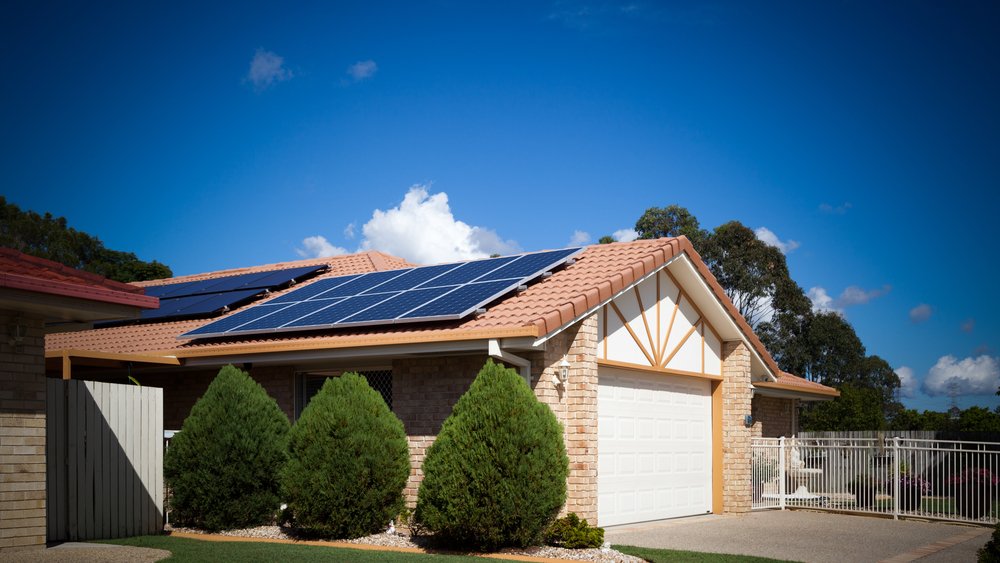There are two modes of on-grid connection:
– User continues to buy the electricity they consume from distributor at the established price and also owns an electricity generating system that can bill the kWh produced at a higher price.
– In Self-consumption or “Net Metering” the system will be able to inject energy into the network when its production exceeds self-consumption, and extract energy from it otherwise.
A 1.5 kWp system occupies about 22 m2 of roof (12 m2 of modules net surface) and will feed as much energy to the grid as that consumed by a small house throughout the year.

Estimation of energy produced by an on-grid PV system we will carry out is a simple prediction that consists of mere multiplication of an irradiation value by another of peak power that usually leads to estimates that are far from system real behavior.
An approach to more exact calculations should consider different factors that influence the useful energy generation process (PV generator location, temperature variations, shadows, maximum available power, second-order phenomena, inverter characteristics, etc.).
Whatever procedure adopted, we should try to combine simplicity with precision.
When calculating an on-grid PV system, following conditions must be taken into account:
1- System nominal power (kWp)
In practice, it will be established based on available surface area, investment to be made and amount of solar electricity to be generated.
Once module power to be used is determined, Wm, we multiply it by modules number to be installed Nm to obtain system peak nominal power Pmp:
Wm. Nm = Pmp
2- Electric energy to generate
The energy that could be obtained for each month can be calculated using the following expression:
Em = km. Hm. Pmp. PR. nm / GCEM
Where:
Em is solar energy production of month m in kWh.
km is correction factor to be applied due to modules inclination for month m (its values for northern hemisphere can be accessed in Censolar tables and at http://www.cleanergysolar.com/2011/09/15/tutorial-tables-correction-factor-of-k/) according to latitude of system location.
Hm is energy in kWh that affects a square meter of horizontal surface on an average day of month m. From the corresponding table the value in MJ / m2 (mega joules / m2) is obtained. The conversion must be carried out and expressed in kWh / m2.
To obtain the average daily radiation of each month expressed in MJ / m2 anywhere in the world, we can consult Opensolar DB.
The monthly mean daily irradiation can also be obtained from renowned databases such as NASA http://eosweb.larc.nasa.gov/sse or Joint Research Center [JRC], http://sunbird.jrc.it/pvgis /pv/imaps/imaps.htm Institute for Environment and Sustainable Renewable Energies, Ispra (Italy).
To convert from MJ to Wh or kWh we use the following equivalence:
1 MJ = 106 J = 0.277 kWh = 277.77 Wh
Pmp is the peak power of the generating field expressed in Kwp.
PR is the system energy performance factor or performance ratio defined as system efficiency in real working conditions. In practice, PR = 0.8 is usually taken
nm is number of days in month considered.
GCEM = 1kW / m2 CEM means Standard Measurement Conditions universally used to characterize solar generators, which as we have already seen are equivalent to: Solar irradiance: 1000 W / m2; Spectral distribution: AM 1.5 G; Cell temperature: 25 ° C.

Estimate of the energy injected annually into network will be obtained by adding the energy values Em for each of the twelve months of the year.
The key element in a grid-connected system is the inverter, which ensures that the circuit-module-grid coupling is perfect, safe and efficient.
This content was extracted from the Commercial Technical Manual of Photovoltaic Solar Energy and is part of Sopelia Solar e-learning.
All you need is Sun. All you need is Sopelia.

I am a Project manager for a Canadian developer of company developments and social housing projects in Latin America, and I would like to talk with the responsible person for on-grid systems for houses., that we will like to onclude it with our houses.
Denis Andrew Gittins
Hi Andrew. You can send us detailed info to solar.tecnico@gmail.com Regards
Hi there! I could have sworn I’ve been to this website
before but after looking at a few of the articles I realized it’s new to me.
Regardless, I’m certainly delighted I found it and I’ll be book-marking it
and checking back frequently!
Thanks for your comments. Regards
Excellent post. I used to be checking continuously this
blog and I am inspired! Extremely useful information specifically the ultimate
section 🙂 I care for such information a lot.
I was looking for this certain info for a long time.
Thanks and good luck.
Thanks for your comments. Regards